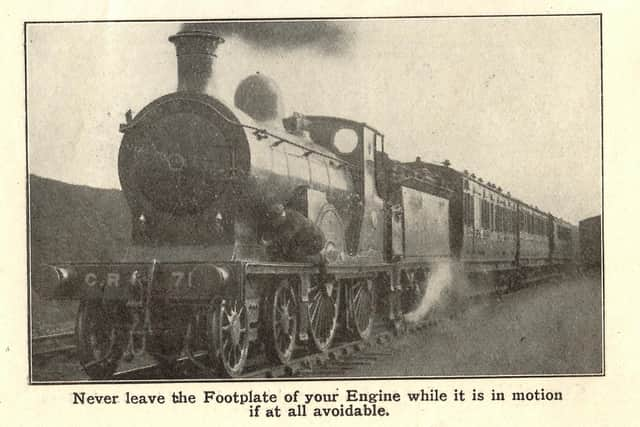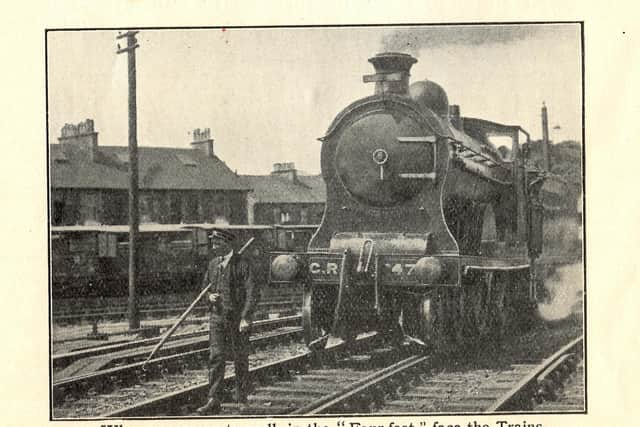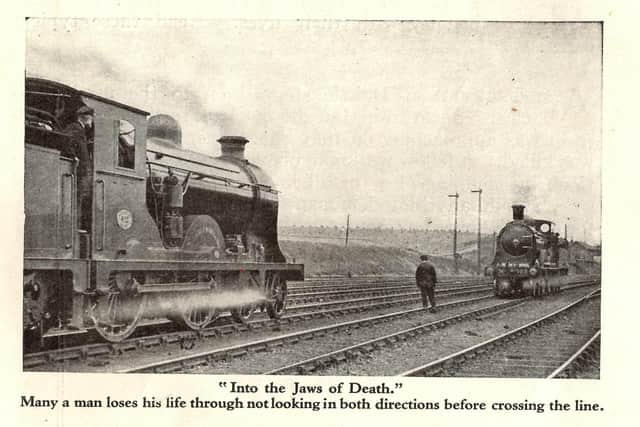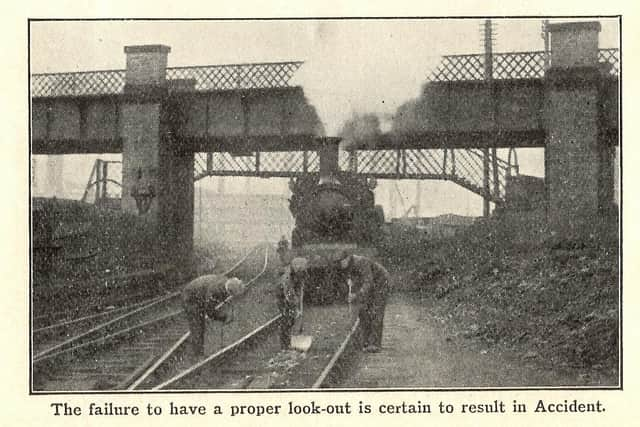‘Appalling’ number of historic Scottish rail worker casualties detailed in new memorial archive
Newly published information as part of the Railway Work, Life & Death project details 949 workers killed and 2,942 injured on Scotland’s railways between 1900 and 1939.
The death toll is the equivalent of nearly 24 a year – compared to two across Britain in 2021-22, neither of them in Scotland.
Advertisement
Hide AdAdvertisement
Hide AdScotRail driver Brett McCullough and conductor Donald Dinnie who were killed along with passenger Christopher Stuchbury in a derailment at Carmont in Aberdeenshire in 2020 were the first deaths aboard a train north of the Border for 26 years.


The archive features some 21,000 records of accidents to British and Irish railway staff collated from official reports by researchers at the York-based National Railway Museum and Portsmouth and Warwick universities.
Fatal incidents included fireman J Murray being crushed under his locomotive as he prepared it for service in Motherwell in 1939 when it was hit by another locomotive.
He died six days later, with reduced wartime lighting found to be a root cause.
Four years earlier, fireman J Duff and driver A Fisher suffered burns when the firebox of their locomotive exploded in Dundee and flames engulfing the cab.


Project co-leader Dr Mike Esbester, of the University of Portsmouth, described the number of casualties as “appalling”.
He told The Scotsman: “The dangers of the job in that era are not widely appreciated.
"The railways were one of the biggest employers of the time, and to be killing and injuring so many people is quite staggering.
Advertisement
Hide AdAdvertisement
Hide Ad“This isn't a rose-tinted spectacles view of the steam age railway, but shows the hardships too.


"We can see the particular dangers around collieries and heavy industry, especially where they involve lots of goods movements.”
Dr Esbester said that behind each statistic was a human tale: “It personalises what might otherwise be an impersonal story.
"This database means people can find out more for themselves - including seeing if their relatives feature.
"We already know that's a big attraction for people globally.”


Some families suffered multiple tragedies, with driver George Michie killed at Dunphail, south of Forres, in 1901 when he fell head first while climbing between two locomotives while they were moving.
Almost exactly a year later, his older brother Charles, also a driver, was injured when he slipped and fell from his locomotive in Newtonmore.
The Scottish casualties were aged between 14 and 82, with all but ten of them male and only one female fatality, which Dr Esbester said reflected the values of the time in restricting women to less dangerous roles.
Advertisement
Hide AdAdvertisement
Hide AdSeven of the women injured were carriage cleaners, including Augusta Lyall, who fell from a wooden cleaning platform in Edinburgh in 1926 after her heel caught in a gap in the planks, breaking a rib and tearing muscles.
Dr Esbester said the investigation found the gaps in the planks were at fault – whilst they were generally not a danger to men's shoes, for women they posed a greater risk due to their smaller heel sizes.
A total of 163 of the casualties were non-railway staff working on or near the railways such as dockers, merchants collecting goods and farmers.
Comments
Want to join the conversation? Please or to comment on this article.
